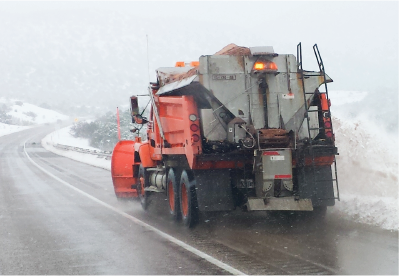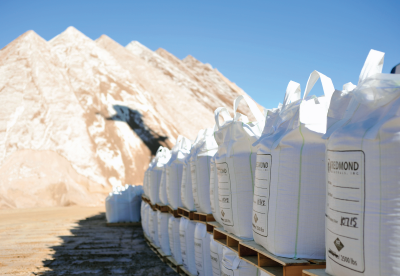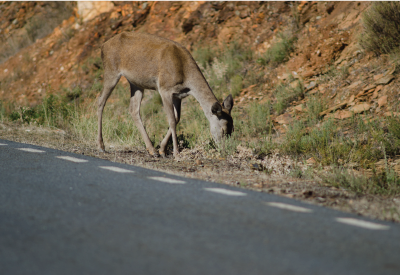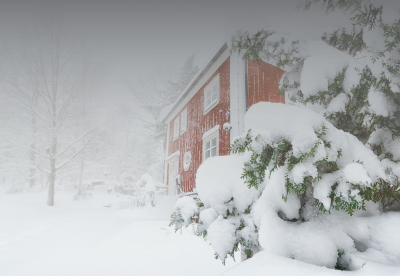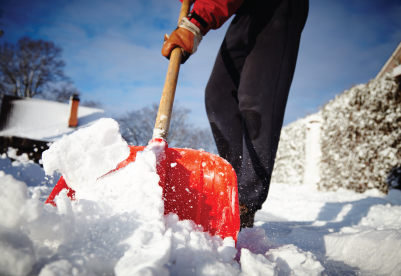Date October 21, 2021 | Brooke Loeffler
Tips for Driving in the Snow
Features On Your Car: To use or not to use?
First, let’s begin with your vehicle itself. Automotive safety features have come a long way in the last couple decades. As you hit the roads this winter, it is important to know which of these features will help or hinder your safety.

Traction Control
Some vehicles come equipped with an electronic traction control system. This system monitors the relationship between your wheels, brakes, and engine power to prevent your wheels from spinning on low-friction surfaces. It’s name is a bit of a misnomer in that it does not actually increase your tire’s traction, but attempts to prevent your wheels from spinning fruitlessly. Traction control usually includes a convenient button so you can switch it on and off.
If you ever get stuck in the snow, turn off the traction control until you have dug out and dislodged your vehicle. Using it will interfere with the gentle drive and reverse motions you need to release your wheels. Once you are unstuck, you can immediately turn traction control back on.
Stability Control
Stability control features use your brakes, the engine’s onboard computer, and sideways yaw sensors to help you keep your car pointed in the direction you want to go. This system should stay on all winter long, and can be helpful if you hit black ice.
Cruise Control/Autopilot...You Cruise, You Lose
Winter driving demands that you be in complete control of your vehicle at all times. Even if road conditions don’t look hazardous, slippery ice can pop up when you least expect it. Save your cruise control driving for warmer weather.
The same goes for auto-pilot functions, no matter how cutting edge. It is best to leave the cruise control and autopilot functions off during the winter so you are ready to react quickly when the occasion calls for it.
All Wheel/4 Wheel Drive
No...they are not the same thing.
- 4 wheel drive systems split the engine’s power into 2 sections, between the front and rear axle. That power is then shared equally between the 2 wheels attached to those axles.
- All wheel drive systems split the engine’s power into 4 sections, and each wheel is treated individually. For example, 4 wheel drive works well for rough/uneven terrain where 1 or more wheels may temporarily lose contact with the ground. The car’s computer detects that loss of contact and diverts power to the wheels that actually need it.
Both systems can give drivers a false sense of invisibility on winter roads. These drivers still need to slow down their braking and acceleration and make less aggressive steering adjustments during snowy conditions. Yes, these systems control how much power gets to your wheels. But if conditions are icy, and those wheels can’t put that power to the pavement, they will be sliding around just like everyone else.
Anti-Lock Braking System (ABS)
ABS became an industry standard because, in an emergency situation, the average driver tends to slam on the brakes too hard. Without ABS, this panicked reaction causes the wheels to lock up, and the driver loses the ability to steer.
You may have heard the advice to gently pump your brakes in icy conditions to slow your vehicle. However, that action should only be used if you have an older vehicle without ABS. If you have ABS on your vehicle, you do not need to pump your brakes. Instead, just apply steady but firm pressure to your brake pedal. It is important to remember that while driving in wintry conditions, avoid any aggressive actions, including braking.
Winter Driving Strategies
Pad Your Timeline
Give yourself extra time from start to finish. When you get behind the wheel during the winter, you should always assume you will encounter conditions that require a little extra time and patience.
Slow Down
The most important rule for winter storm driving is to slow down. Just because you feel comfortable driving in the snow, does not mean other cars around you have the same expertise. The faster you are going, the less reaction time you will have when you encounter ice, a spun out vehicle, a snow plow, etc.
Overall, both your acceleration and deceleration should slow down. Operating with a lead foot on either the gas or brake pedal can destabilize your car and make your movements more unpredictable for the drivers around you. Remember, your speed should be determined by the road conditions, not the posted speed limit.
Watch Out For Black Ice

Freeze and thaw cycles create invisible layers of “black ice” on paved surfaces. This glazed layer forms most commonly in the cold pre-dawn. Pay especially close attention to shadowy areas, especially over and under bridges and overpasses. Bridges will often freeze before normal pavement because they are not naturally insulated by earth below it.
If you hit black ice, immediately let off both the gas and the brakes. Keep your steering wheel as straight as possible and only make gentle adjustments to avoid fishtailing while your car regains traction. If you feel the back end of your car sliding left or right, gently adjust the steering wheel in that same direction:
- back end pulling to the right = gentle adjustment to the right
- back end pulling to the left = gentle adjustment to the left
If your car has already entered a skid, do not try to overcorrect it. Gently turn into the skid until you vehicle comes to a stop.
Increase Your Following Distance
While it is a good idea to follow other cars’ tracks in the snow, you shouldn’t follow too closely. Give other drivers a larger buffer zone during the winter. Icy conditions increase stopping distances, so you will need more room to adjust to hazards in front of you. The same goes for passing other vehicles. Give yourself and those around you more room as you maneuver from lane to lane, especially for snow plows.
Visibility Is Key
Wintry conditions wash out the normal visual cues you use while you are driving. Snow, road spray, and shorter daylight hours all disguise the dimensions of the vehicles around you, the presence of hazards, and changes in road direction. Use your lights night and day during the winter so you can see, and so others can see you.
Don’t Crowd The Plow
Snow fighters hit the roads during the worst conditions to keep our transportation channels open all winter long. Give them space and remember that the clearest section of road is a safe distance behind the plow. Brush up on your snow plow etiquette so they can do their jobs safely.
Drive Less Aggressively
 Did you know, according to the Department of Transportation (Federal Highway Administration), there are an average of 1,235,145 weather related crashes on US roads every year. These crashes result in an average of 418,005 persons injured and 5,376 persons killed.
Did you know, according to the Department of Transportation (Federal Highway Administration), there are an average of 1,235,145 weather related crashes on US roads every year. These crashes result in an average of 418,005 persons injured and 5,376 persons killed.
Everyone on the road has somewhere they need to be. So put on some relaxing tunes, and drive with the mindset that even though it may take you a little longer to get where you are going, the most important goal is to get there safely.
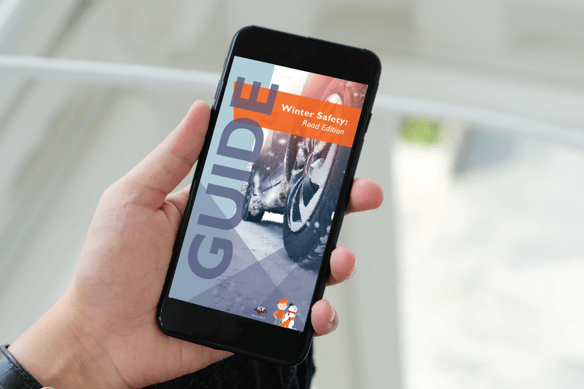
Want some more helpful winter driving tips from Ice Slicer®? Click here to get our handy Winter Road Guide.
© 2024 Redmond Minerals Inc.

